Process and Oversight
The Truckee Tahoe Airport District has worked for years to develop new flight procedures that maximize pilot safety, security and efficiency while minimizing impacts to the community. The advent of ADS-B [link to TRK ADS-B page] has allowed the airport to update its flight procedures.
Flight procedures are detailed, FAA certified instructions for an aircraft during specific parts of a flight. They determine the approximate position and altitude of the aircraft as it travels over the ground in both the arrival and departure phases of flight. Because the FAA has authority over all flight activity in the air, TTAD is required to use a specified set of criteria to develop new procedures that allow the airport some influence over the location of arriving and departing aircraft.
These procedures are designed to shorten flight paths over the community, lessen noise exposure, and ultimately reduce aircraft noise and greenhouse gas emissions impacts for the Truckee-North Tahoe area.
The entire process to develop and gain approval from the FAA is expected to take between 18 and 36 months.
During the airport’s flightpath development process, a number of concepts were identified as potential procedural improvements. Each of the concepts were evaluated against the following requirements; if the concept didn’t fully meet all criteria, it was not carried forward. The concepts must:
- Must provide environmental benefits – reduced emissions, noise, or track miles.
- Serve all runways to enhance runway utilization and reduce environmental impact.
- Meet current FAA procedure design criteria.
- Meet current FAA terrain and obstruction requirements.
- Meet current performance-based network design criteria.
- Provide independent operations from current procedures at:
- South Lake Tahoe Airport (TVL)
- Reno/Tahoe International Airport (RNO)
- Sacramento International Airport (SMF)
- Be available to the majority of aircraft that use TRK.
With the new flight procedures,
the airport seeks to:
Influence the path of aircraft as they approach and transition to land.
Influence the path of aircraft as they depart and transition on course.
Develop safe flight paths that benefit the community and reduce environmental impact.
Develop safe flight paths that accommodate the widest array of aircraft type, size, speed, and character.
Create efficient procedures that align with federal regulations, airspace procedures, and regional terrain.
The Process
18 – 36 months
The Truckee Tahoe Airport District has completed the Design and Criteria portion of the procedure development process. The airport developed working groups with pilots, technical advisors, airport leadership, the Federal Aviation Administration, and environmental organizations to suggest improvements to the existing flight procedures. The airport and its aviation partners also performed several assessments [link to Data] of the planes that fly into TRK, the paths they currently take, and items like terrain, population centers, and improvements in aviation technology that may allow for more streamlined flightpaths in and out of the Truckee region. From these analyses, the Truckee Tahoe Airport District has developed a set of potential flight procedures, and is now sharing them with the community.
After the Truckee Tahoe Airport District drafts a set of potential new flight procedures, the procedures must undergo federal environmental review. All environmental reviews of air traffic projects are conducted under the guidelines and regulations of the National Environmental Policy Act (NEPA) and related statutory and regulatory environmental laws such as the Clean Air Act and National Historic Preservation Act, as well as internal FAA environmental regulations:
- FAA Order 1050.1F (PDF) (Environmental Impacts: Policies and Procedures)
- FAA Order 7400.2M (Chapter 32) (PDF) (Procedures for Handling Airspace Matters)
For more details on the FAA environmental review process, click here.
The airport is actively seeking input from the community on the proposed flight procedures. Members of the public have from January until late March to review the procedures and provide their feedback. The feedback will be recorded and presented to the Truckee Tahoe Airport Board at the March meeting.
To provide your feedback on the proposed flight procedures, click here [link to Feedback].
After the environmental review has been conducted, the FAA will details to come.
Oversight
- Federal Aviation Administration
- Truckee Tahoe Airport Board
- TTAD Airspace Design Technical Advisory Committee
- House of Representatives, California 4th District
- Pilots Association
- Noise and Environmental Groups (such as?)
- Environmental Protection Agency
- Safety Risk Management Panel
The Truckee Tahoe Airport District has worked for years to develop new flight procedures that maximize pilot safety, security and efficiency while minimizing impacts to the community. The advent of ADS-B [link to TRK ADS-B page] has allowed the airport to update its flight procedures.
Flight procedures are detailed, FAA certified instructions for an aircraft during specific parts of a flight. They determine the approximate position and altitude of the aircraft as it travels over the ground in both the arrival and departure phases of flight. Because the FAA has authority over all flight activity in the air, TTAD is required to use a specified set of criteria to develop new procedures that allow the airport some influence over the location of arriving and departing aircraft.
These procedures are designed to shorten flight paths over the community, lessen noise exposure, and ultimately reduce aircraft noise and greenhouse gas emissions impacts for the Truckee-North Tahoe area.
The entire process to develop and gain approval from the FAA is expected to take between 18 and 36 months.
During the airport’s flightpath development process, a number of concepts were identified as potential procedural improvements. Each of the concepts were evaluated against the following requirements; if the concept didn’t fully meet all criteria, it was not carried forward. The concepts must:
- Must provide environmental benefits – reduced emissions, noise, or track miles.
- Serve all runways to enhance runway utilization and reduce environmental impact.
- Meet current FAA procedure design criteria.
- Meet current FAA terrain and obstruction requirements.
- Meet current performance-based network design criteria.
- Provide independent operations from current procedures at:
- South Lake Tahoe Airport (TVL)
- Reno/Tahoe International Airport (RNO)
- Sacramento International Airport (SMF)
- Be available to the majority of aircraft that use TRK.
With the new flight procedures, the airport seeks to:
Influence the path of aircraft as they approach and transition to land.
Influence the path of aircraft as they depart and transition on course.
Develop safe flight paths that benefit the community and reduce environmental impact.
Develop safe flight paths that accommodate the widest array of aircraft type, size, speed, and character.
Create efficient procedures that align with federal regulations, airspace procedures, and regional terrain.
The Truckee Tahoe Airport District has worked for years to develop new flight procedures that maximize pilot safety, security and efficiency while minimizing impacts to the community. The advent of ADS-B [link to TRK ADS-B page] has allowed the airport to update its flight procedures.
Flight procedures are detailed, FAA certified instructions for an aircraft during specific parts of a flight. They determine the approximate position and altitude of the aircraft as it travels over the ground in both the arrival and departure phases of flight. Because the FAA has authority over all flight activity in the air, TTAD is required to use a specified set of criteria to develop new procedures that allow the airport some influence over the location of arriving and departing aircraft.
These procedures are designed to shorten flight paths over the community, lessen noise exposure, and ultimately reduce aircraft noise and greenhouse gas emissions impacts for the Truckee-North Tahoe area.
The entire process to develop and gain approval from the FAA is expected to take between 18 and 36 months.
During the airport’s flightpath development process, a number of concepts were identified as potential procedural improvements. Each of the concepts were evaluated against the following requirements; if the concept didn’t fully meet all criteria, it was not carried forward. The concepts must:
- Must provide environmental benefits – reduced emissions, noise, or track miles.
- Serve all runways to enhance runway utilization and reduce environmental impact.
- Meet current FAA procedure design criteria.
- Meet current FAA terrain and obstruction requirements.
- Meet current performance-based network design criteria.
- Provide independent operations from current procedures at:
- South Lake Tahoe Airport (TVL)
- Reno/Tahoe International Airport (RNO)
- Sacramento International Airport (SMF)
- Be available to the majority of aircraft that use TRK.


- PROVIDE FEEDBACK
- FREQUENTLY ASKED QUESTIONS
TRUKEE-TAHOE AIRPORT DISTRICT
Since 1958, the Truckee Tahoe Airport District has been providing a high quality, safe facility for pilots, visitors, and the community. Nestled in the Sierra Nevada mountain range at an elevation of 5,900 feet, twelve miles from Lake Tahoe, we are committed to offering the best small, mountain airport in the country. We are proud of our pilot safety and community programs, state-of-art energy saving facilities and top notch staff and leadership.
